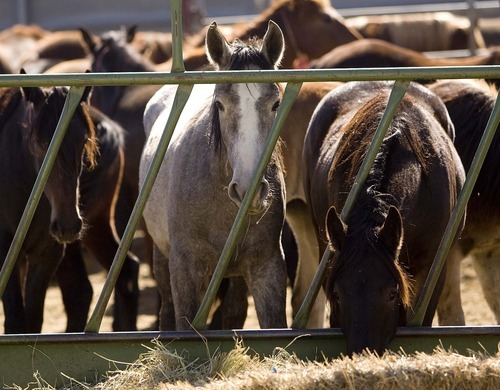This is an archived article that was published on sltrib.com in 2012, and information in the article may be outdated. It is provided only for personal research purposes and may not be reprinted.
Owners of Utah horses and other livestock are urged to take extra precautions this summer to prevent the spread of Vesicular Stomatitis (VS), an animal disease that is rarely fatal but can cause economic losses.
In unusual cases, the disease can be transmitted to humans.
Although there's an outbreak of VS in New Mexico, there is no need to alter or cancel any livestock shows in Utah, said Bruce King, state veterinarian.
Organizers of events involving livestock from New Mexico are required to obtain a health certificate for the animals written within 48 hours of entering the show.
Although most cases of VS are reported in horses, the virus readily infects all species of livestock, officials say.
The disease occurs in areas along rivers, streams, irrigated pastures and lakes or other bodies of standing water. Animals primarily affected are those living in pastures.
Humans can become infected when handling affected animals, contaminated objects, tissue, blood or virus cultures.
The disease also has been shown to be transmitted by a number of biting insects.
Symptoms in humans may include fever, muscle aches, headache and malaise. Blisters are rare, but can occasionally be found on the mouth, lips or hands.
Most people recover without complications in four to seven days.
To prevent infection, protective clothing and gloves should be used when handling infected animals.
When VS occurs in horses, blister-like lesions develop on the tongue, mouth lining, nose and lips.
In some cases, lesions also develop on the coronary bands or on the udder or sheath.
An exact diagnosis should be obtained by testing the blood to rule out the possibility that the lesions are caused by sunburn, irritating feeds or weeds or toxicity from medications, according to the American Association of Equine Practitioners.
The particular strain circulating does not appear to have been in New Mexico previously, said King.
"This appears to be more virulent than previous outbreaks.
Several animals have experienced severe lesions and in some cases significant supportive care has been required for infected animals."
Eleven sites in New Mexico are under quarantine. The New Mexico counties of Otero, Valencia, Socorro and San Miguel have positive confirmed cases.
Dona Ana and Roosevelt counties have had suspected cases, while Bernalillo and Santa Fe are considered high risk for cases of VS.
The last significant U.S. outbreak was in 2005.



